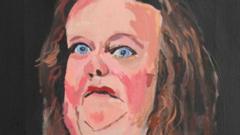
Row erupts over portraits of Australia’s richest woman
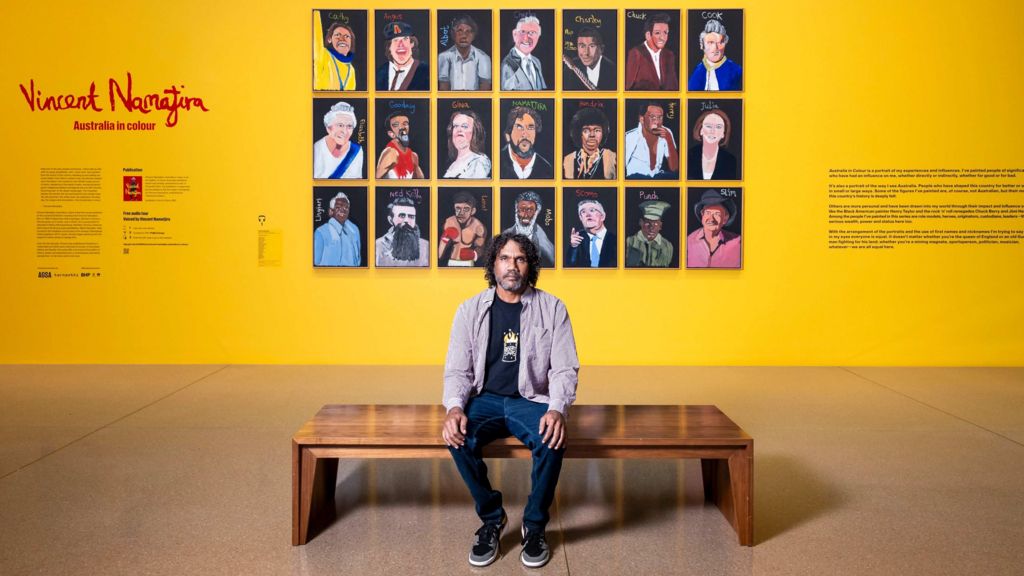
On a stark yellow wall inside a Canberra art gallery, hang 21 colourful paintings – a satirical series depicting some of the most influential people who have shaped Australia.
There’s a wonky looking King Charles, a canvas capturing Cathy Freeman’s famous Sydney 2000 Olympics victory, an image of former prime minister Scott Morrison mid-lecture – even the late Queen Elizabeth II appears.
But one portrait – three from the left in the second row – has become the centre of a peculiar spat. It has embroiled the nation’s richest woman, one of its most celebrated artists and a swimming great – and kicked off a national debate about art and censorship.
Upset at how she has been depicted, mining heiress and billionaire Gina Rinehart approached the National Gallery of Australia (NGA) to ask the portrait of her – and another by the same artist – be removed from public display, according to local media.
But renowned Aboriginal artist Vincent Namatjira is famous for a caricature style which challenges power structures, and he says his Australia in Colour series is no different.
“We are all equal in Australia… No matter what heritage you are, or where you come from… We are all Australian.”
‘I paint the world as I see it’
Ms Rinehart, 70, is a controversial figure. She is known for being one of the biggest private investors in Australian sport and a prolific philanthropist, but also for public legal battles with her family and for her outspoken commentary on everything from climate change to laws protecting Indigenous heritage.
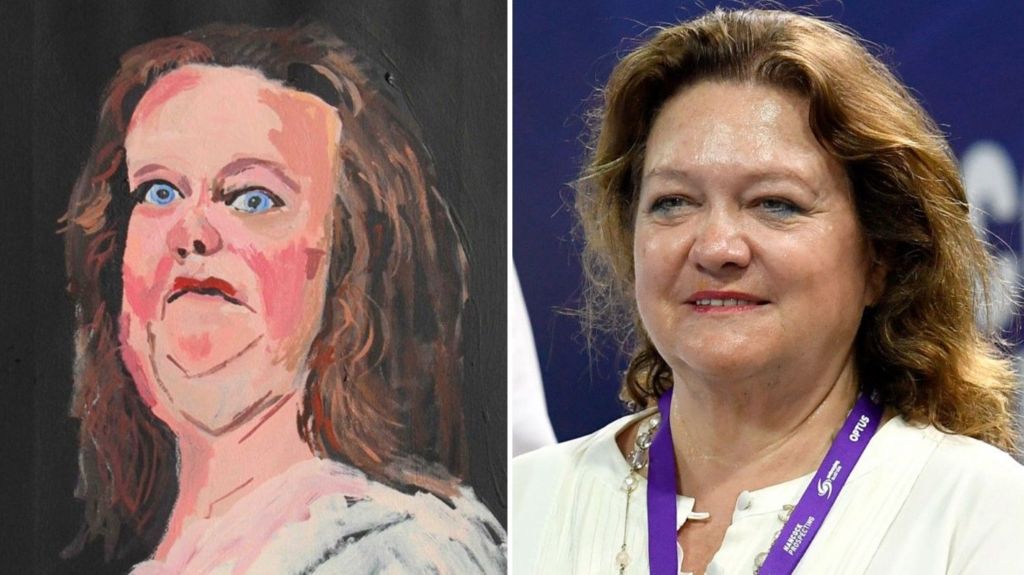
It is unclear exactly what Ms Rinehart’s complaints about the artworks were as she has not spoken publicly. The BBC has approached her company Hancock Prospecting for comment.
Others who have petitioned the gallery, however, claim the portraits – which have been on display there since March – are offensive and mean.
Leading the charge is champion swimmer Kyle Chalmers, who won gold in the 100m freestyle at the 2016 Rio Olympics.
The 25-year-old told the Sydney Morning Herald (SMH) that staff from Hancock Prospecting had told him about the art last month.
Ms Rinehart is a huge financial backer of Australian swimmers – spending about A$40m ($26.6m; £21m) over the past decade to fund sporting bodies and athletes directly. She was also a big supporter of the national netball team, until she withdrew her sponsorship amid a player revolt, reportedly over her company’s record on Indigenous issues.
“At the national championships, [the art] was definitely the talk of the swimming pool and everyone [was] throwing their support behind our patron that makes everything possible for us,” Mr Chalmers said.
“I think she just deserves to be praised and looked upon definitely a lot better than what the portraits have made her out to be.”
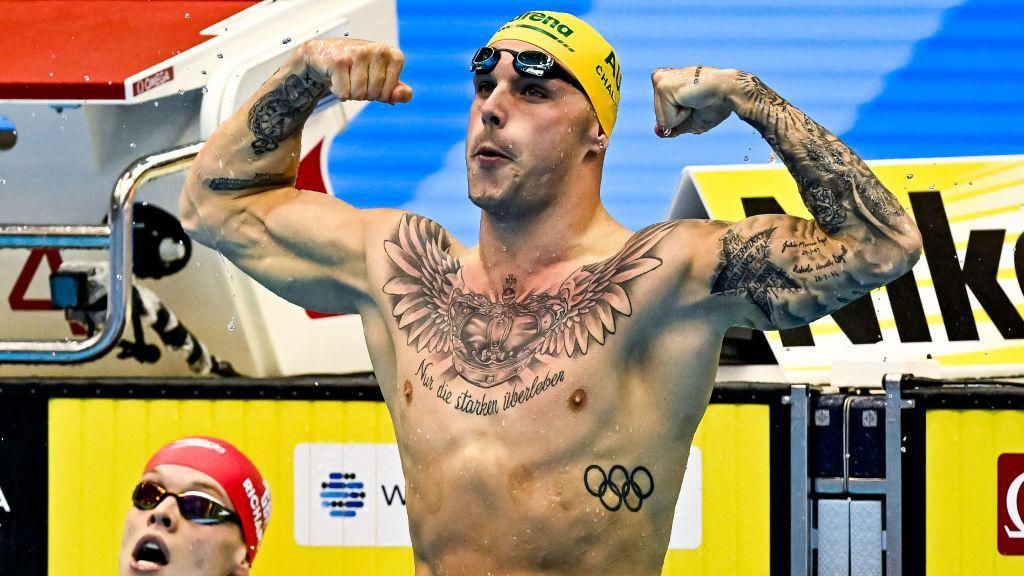
Swimming Queensland boss, Kevin Hasemann, told the Australian Broadcasting Corporation that Mr Chalmers had approached the body on behalf of a group of about 20 swimmers who argued the portraits were unfair and unflattering.
So he too wrote to the NGA.
“I’ve seen the artworks there, and I wouldn’t like to be depicted that way,” Mr Hasemann told the SMH.
“Probably if I were famous, I’d hope that someone would want to say, ‘Well, listen, hold on, that’s not nice’.”
Mr Namatjira’s response to the criticism was simple.
“I paint the world as I see it,” he said in a statement on Thursday.
The 40-year-old is the great-grandson of famed watercolourist Albert Namatjira and has continued his family’s legacy – in 2020 becoming the first Indigenous person to win Australia’s top portrait contest, the Archibald Prize.
He’s long painted with an exaggerated and witty brush, and says his work is designed to make the audience think about influence and privilege.
“Why has this Aboriginal bloke painted these powerful people? What is he trying to say?” he said.
“I paint people who are wealthy, powerful or significant – people who have had an influence on this country, and on me personally, whether directly or indirectly, whether for good or for bad.
“Some people might not like it, other people might find it funny, but I hope people look beneath the surface and see the serious side too.”
‘Dangerous precedent’ for art
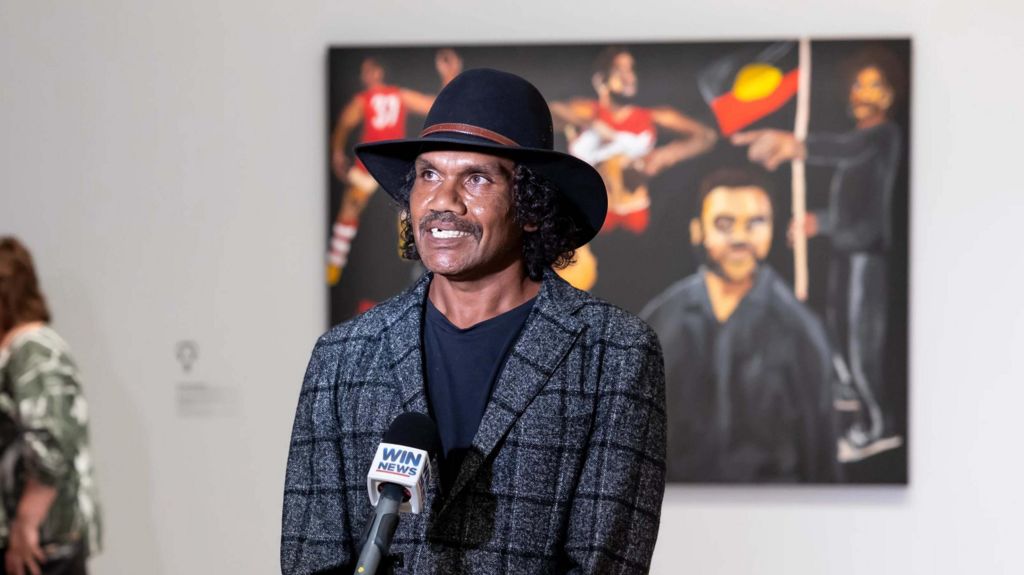
It is safe to say the campaign has had the opposite effect than those behind it intended.
News of the request to pull the artworks down has only exposed them to an exponentially larger audience and drawn the ire of many in the arts community.
Aussie Rules Legend Adam Goodes, the Arts Minister Tony Burke and the industry’s peak body have all defended the exhibit.
“If all portraits had to be flattering, a lot of artists and every cartoonist in the country would be out of a job,” Mr Burke said.
The National Association for the Visual Arts said Ms Rinehart had the right to express her opinions about the artworks, but that “exerting pressure on the gallery for removal of the painting simply because she dislikes it, sets a dangerous precedent for censorship and the stifling of creative expression”.
Local media have reported that the National Gallery ultimately rejected the removal request.
But a spokesperson has said it “welcomes the public having a dialogue on our collection and displays”.














